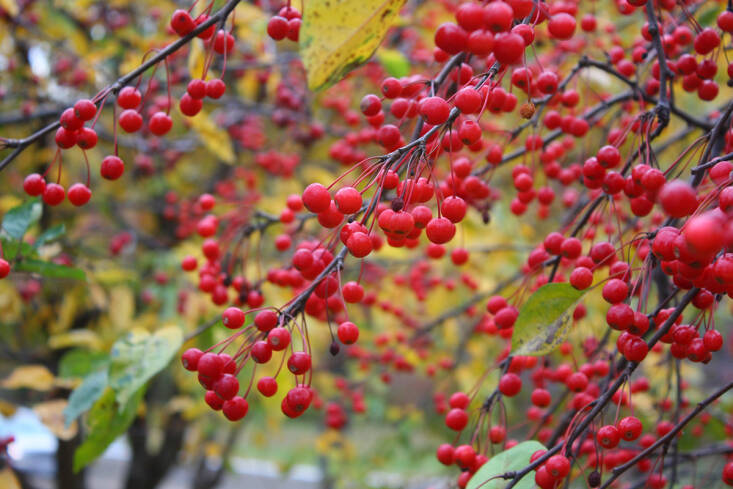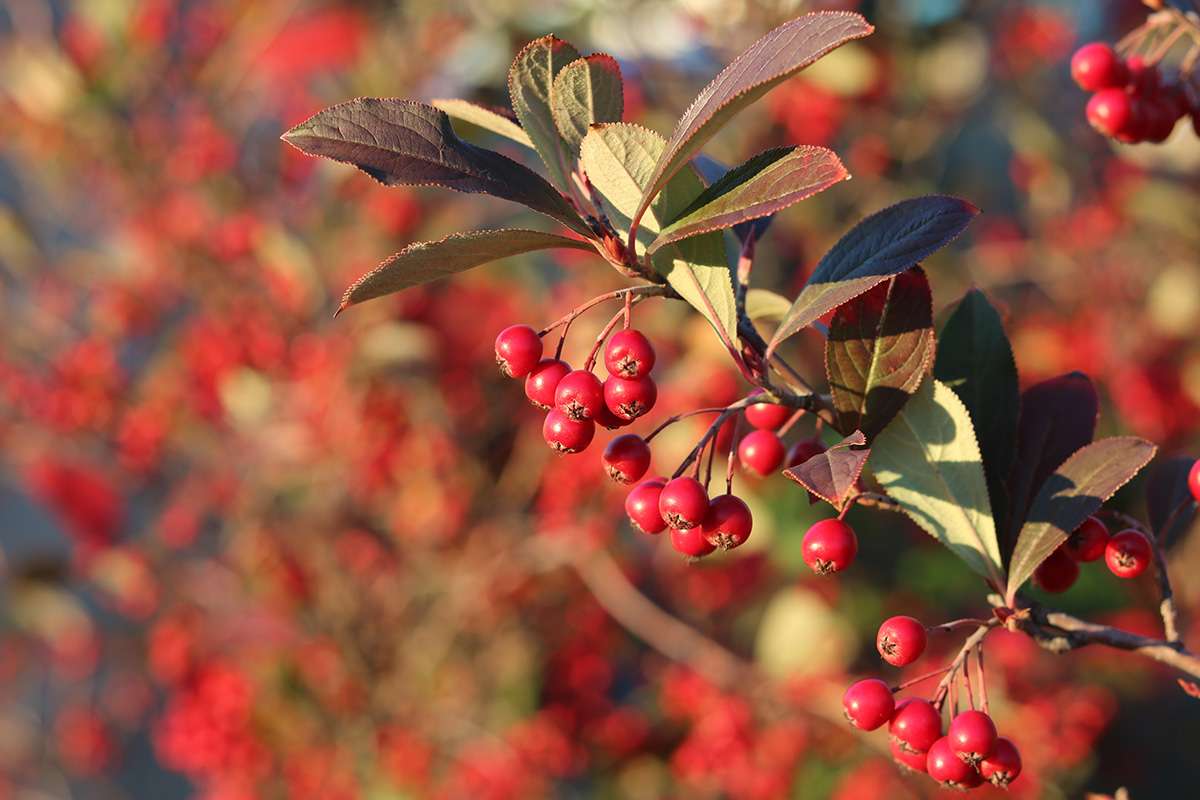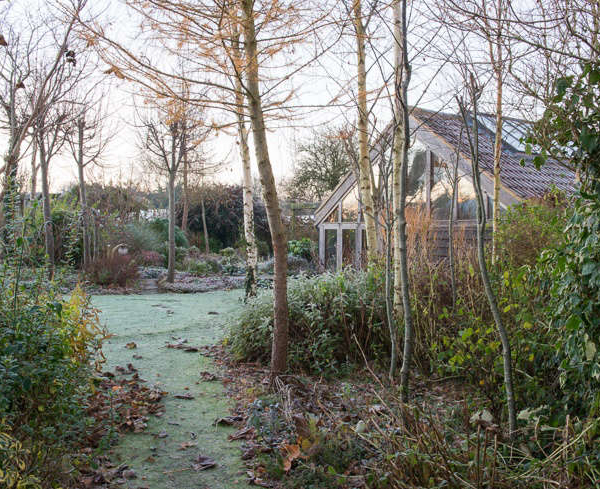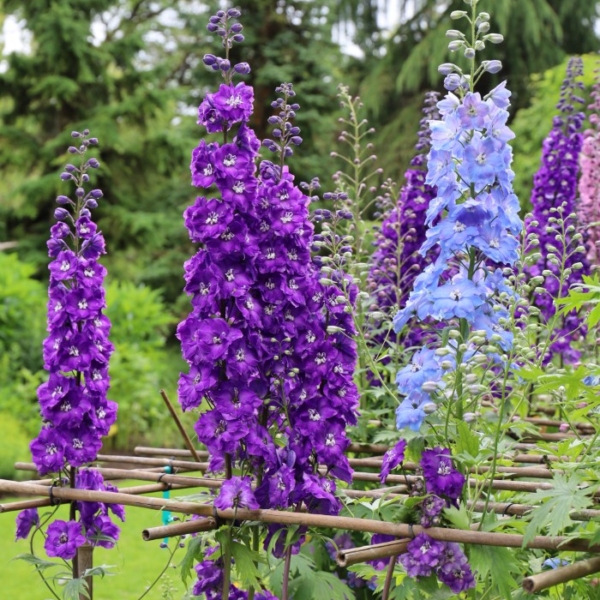The wild and tame red fruits of fall are botanical holiday decorations, in miniature. Adorning trees and shrubs, they breathe optimism into the darkening season. They can bring DIY holiday decorations to life, or make a tasty treat. Some may be a berry, while others are drupes (or pomes).
Here are 10 common red fruits that light up branches even after autumn foliage has turned to a crisp.
Photography by Marie Viljoen.
Winterberry
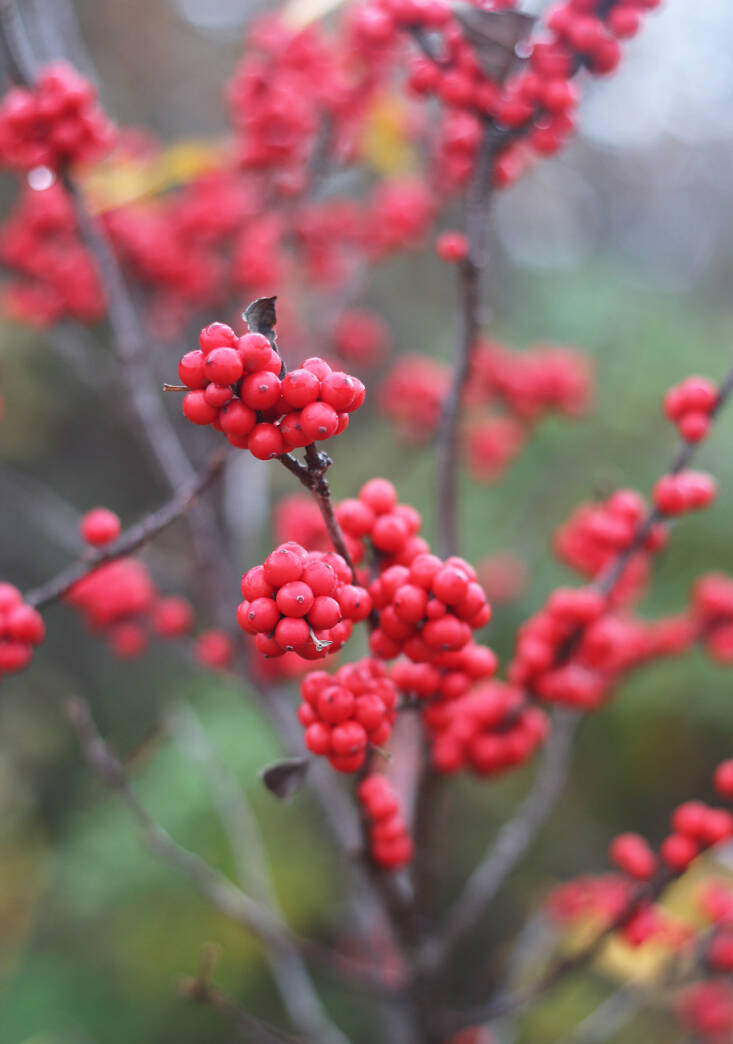
Native to the central and eastern United States, winterberry glows with color through winter. Red as well as yellow and orange varieties hold their fruits even in hard freezes, and look spectacular on the deciduous shrubs’ bare branches. They are often seen in late fall and winter, fresh-cut, at flower sellers. The vivid drupes (not berries) are good food for migrating or resident birds. Although tolerant of shade, female shrubs in full sun will produce the most fruit, in USDA hardiness 3-9. (See Gardening 101: Holly.)
Chokeberry
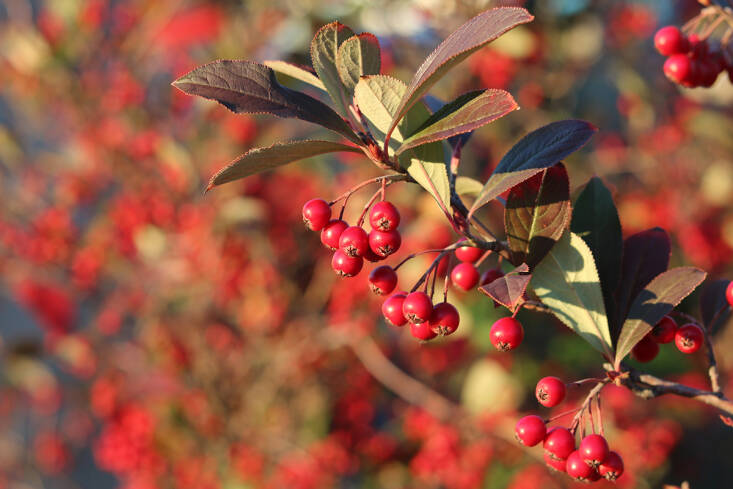
Aronia arbutifolia produces its red pomes (not berries) about a month or more later than its better-known dark cousin, A. melanocarpa (black chokeberry). Its smaller fruits make up for their size in intense color. And once a touch a frost blets them, red chokeberry becomes more palatable than its name suggests. (See Aronia: Grow Your Own Superfood.)
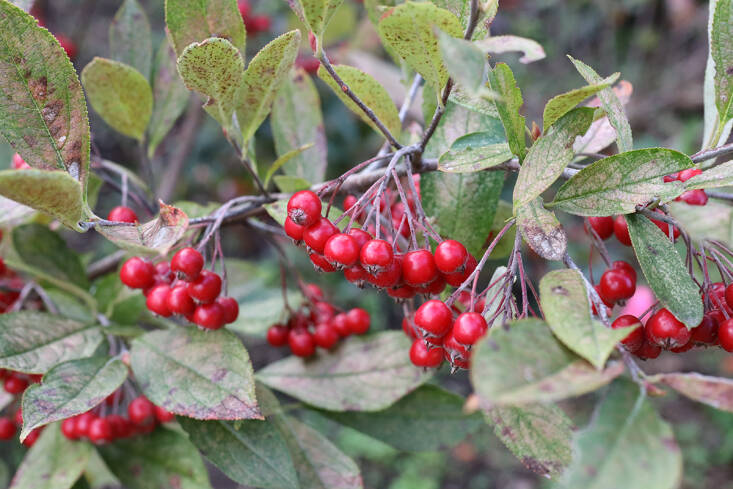
Use the pomes in syrups (you can substitute them in this fermented elderberry syrup method) or add them to cooked fruit butters or fermented ketchups. Their flavor, raw, is very mild and apple-like. Red chokeberry is native to the eastern US and is hardy from zones 4-9. It tolerates dry to boggy soils.
Mountain Ash
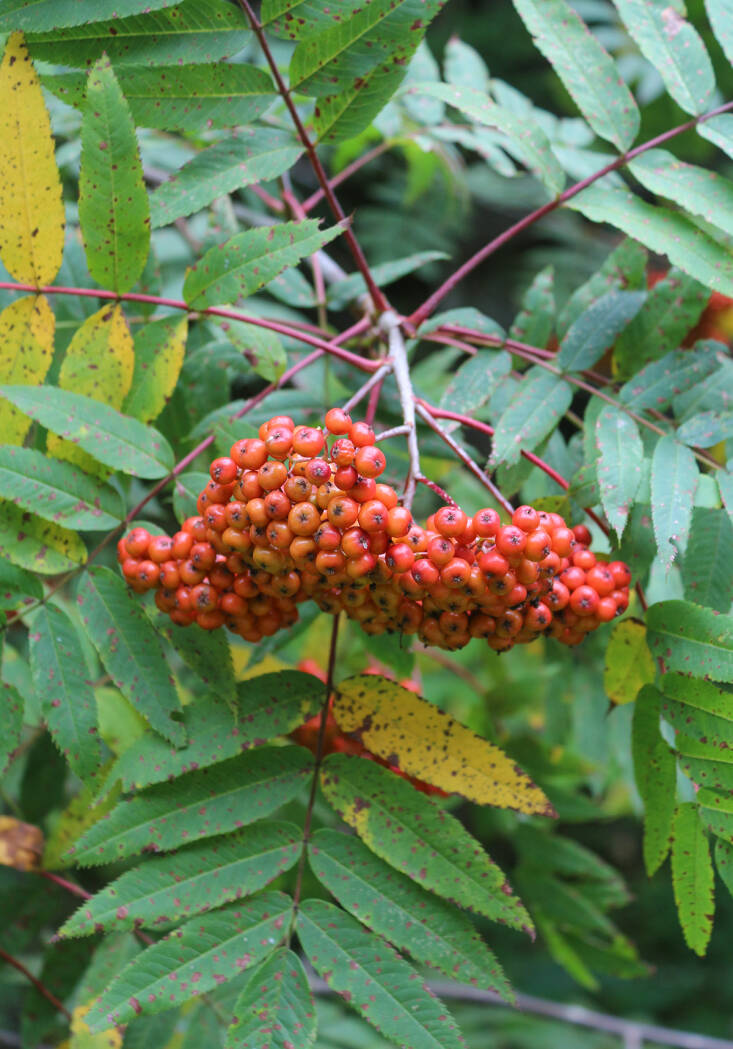
Sorbus americana is a small native tree that grows in acidic soils and cooler climates (zones 3-6) in the eastern part of the US. If there are mountains around, look for this pretty tree. Its clusters of fruits (pomes, again, not berries) take color in late summer but persist on the trees well after leaf-drop and into winter. Taste one, raw. Horrible! But they transform well into cooked jellies and syrups, and, like red chokeberry, are improved by a freeze. (See Gardening 101: Sorbus.)
Hawthorn
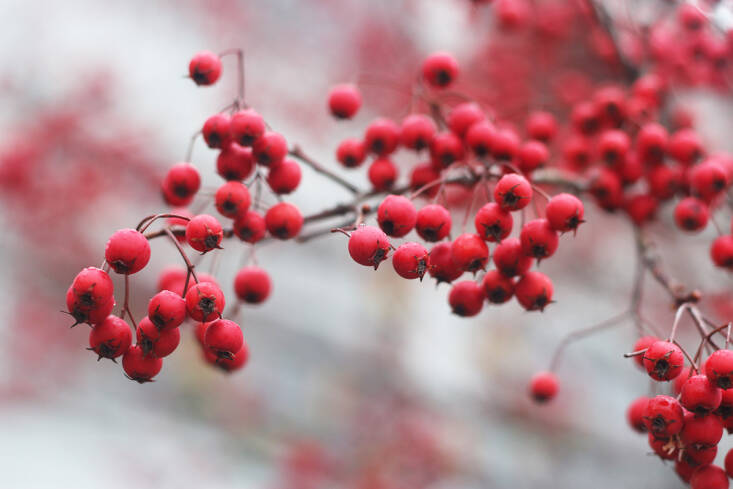
Hawthorns belong to the genus Crataegus, with dozens (possibly hundreds) of species native to North America, Europe, and Asia. In the US, C. viridis ‘Winter King’ is often deployed in cold-climate urban landscaping, where its scarlet fruits (pomes) ripen in fall. More palatable than astringent crabapples, the mild flavor of hawthorn fruit is improved by slow-cooking with spices, to make a hot mulled drink, or to preserve the fruit whole in the tradition of Mexican tejocotes (C. mexicana). ‘Winter King’ is hardy from zones 4-7. (See Gardening 101: Hawthorn.)
Crabapple
